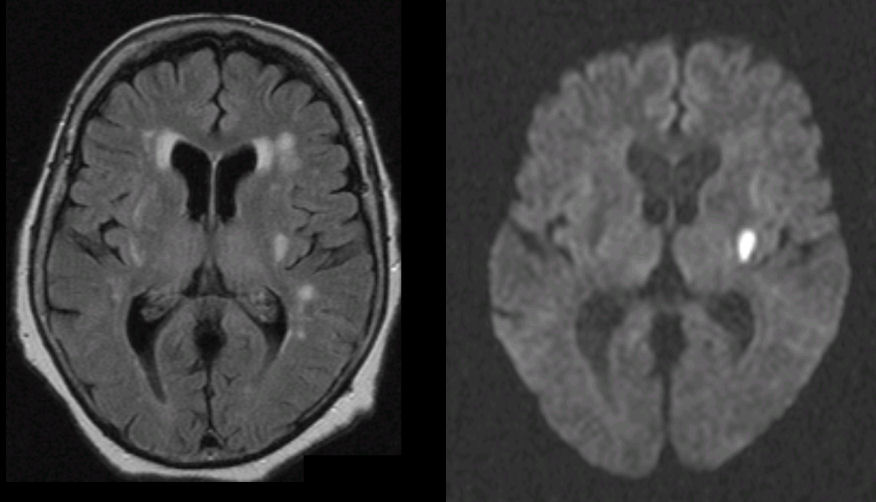

![]()
![]()
| Lacunar Infarction: (Left) Flair axial MRI: (Right)
Diffusion-weighted MRI. Note the numerous white matter
lesions in the Flair image, consistent with small vessel disease. However, it is not possible to
discern which are new and which are old lesions in the Flair image. This is the major advantage of
diffusion-weighted imaging. On the diffusion-weighted image on the right, note the
obvious bright signal in the left posterior limb of the internal
capsule. This is the acute lacunar stroke that accounts for the
patient's current symptoms. Lacunar strokes (also known as small vessel disease) are caused by occlusion of the deep perforating blood vessels. Small vessel disease is most commonly associated with hypertension and diabetes. There are several classic lacunar syndromes, including pure motor hemiparesis, ataxic hemiparesis, clumsy hand-dysarthria (caused by lesions either in the internal capsule or basis pontis) and pure sensory stroke (caused by a lesion in the thalamus). Remember that lacunar strokes are NOT associated with cortical findings, such as aphasia (except rarely), apraxia, neglect, or visual field abnormalities. |
Revised
11/23/06
Copyrighted 2006. David C Preston